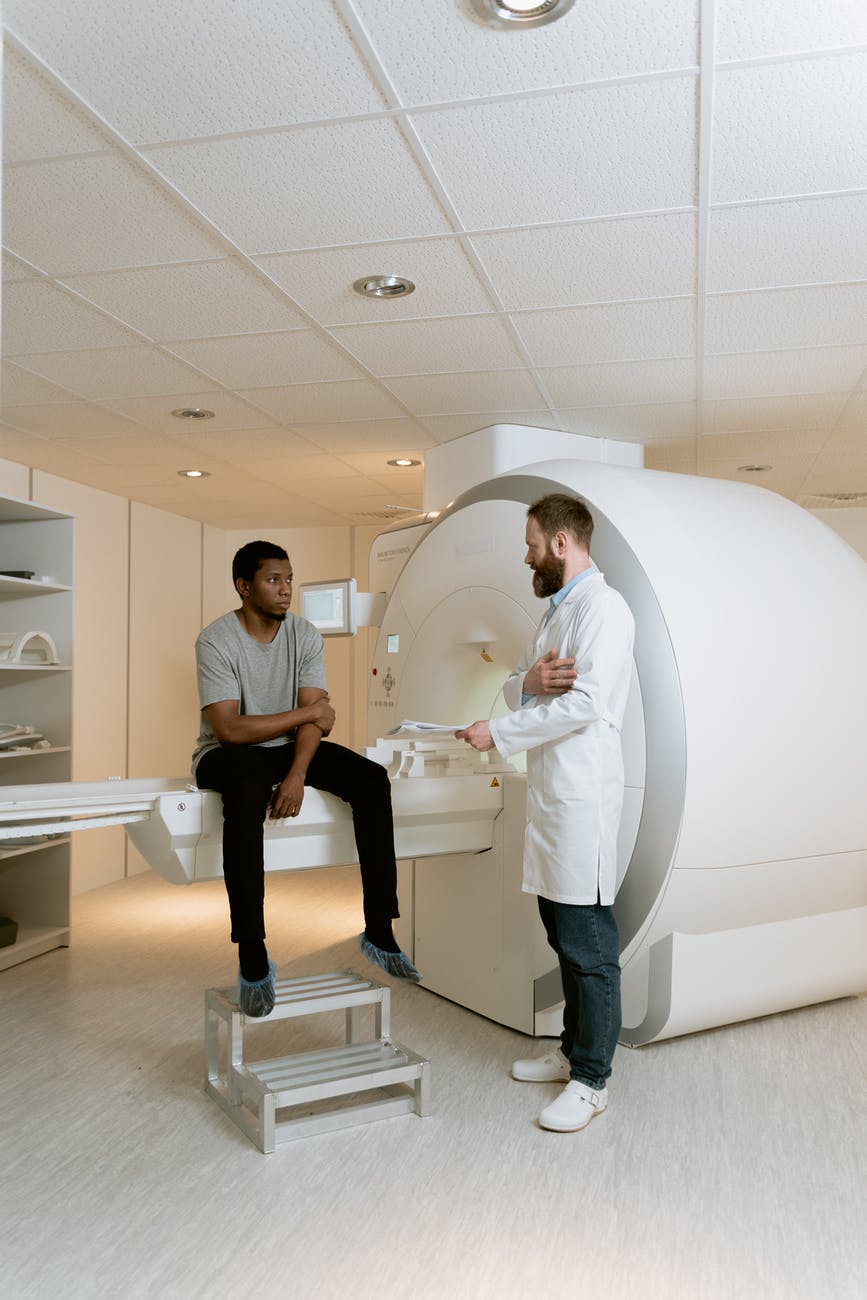There are two sides to the debate when it comes to technology's role in healthcare. But we cannot argue that these new advances have helped provide patients with real-time healthcare while reducing costs for hospitals who invest into high-tech equipment like telemedicine machines which can be a boon in developing countries where there may not even be accessible doctors or clinics nearby. Technology gets blamed today for many ills society faces but this isn't necessarily a bad thing says one perspective because advanced medical devices such as telemedical machines have reduced hospital operating costs while still being able to give people instant access to health advice.
With the recent emergence of COVID-19, and our society's constant reliance on technology for everything from delivering patient care to communicating with loved ones across oceans, it is no question that we need a change. Prior to COVID-19 pandemic that caused an influx in technology use as a direct patient care tool, there was heated debate about its benefits over disadvantages when used by physicians during diagnosis or treatment. It has been argued by some experts in medicine that digital technologies have contributed heavily to many social problems like sleep deprivation, anxiety disorders among children who use screens too much without parental supervision or self-monitoring tools such as time limits or age restrictions set up in apps themselves; spreading misinformation through fake news stories and other sources alike which can lead only to increased civil unrest between communities all around the world. With this virus making its rounds now though, it’s clear how valuable tech can be when emergencies happen, hospitals are relying now more than ever.
The COVID-19 pandemic, which is the first of its kind in recent history to be a viral outbreak rather than an airborne one like SARS or bird flu, has not only caused numerous fatalities but also completely changed our relationship with technology. The introduction of this virus means that our collective relationship with tech is changing, and those in the pharmaceutical industry are realizing how much it will alter their work as well. With all medical advancements reliant on computers and data storage devices for their operation; and the new ones being created every day, our lives are now more intertwined with these machines than ever before. This means that while humanity was previously waiting out this "new normal" we were told about following the pandemic's inevitable conclusion, it turns out that COVID-19 had taken away so much from us as individuals and collectively over such a short span of time.
In order to stay competitive and provide patients with high-quality medicine, it's important for companies to explore new ways of producing therapies and other medications while also considering cost-effectiveness. Pharma industry leaders have long been the source of knowledge and wisdom when it comes to what inspires consumers in pharmaceuticals. In this article, we'll cover a few examples from recent conversations with our leaders in the pharmaceutical industry.

Men’s Health Finally Meeting Its Match
The trouble with healthcare for men has long been a problem. From their unwillingness to see doctors, the laziness that prevents them from keeping appointments or following up on treatment recommendations, and even just dealing with other people in general - it's difficult enough getting guys into clinics as is without all these additional issues! With the introduction of new treatments and methods for improving patient care, has technology come to rescue with ways in which clinicians can treat their male patients by being able to reach them on a more personal level?
Healthcare providers have struggled over decades of inadequate care delivery due to everything from bravado (or maybe fear) down to just plain laziness. But now thanks new advancements like telemedicine companies we can bring closer what many believe are our most neglected patients- males who often refuse visits because they're embarrassed by certain aspects of their health.
Living as a man in the 21st century is not easy. We are expected to be strong and able; all while being viewed as weak by society because of natural aging patterns that come with living through time. To make matters worse, we have had generations before us provide little help for those who find themselves suffering from ailments like heart disease or diabetes. However, telehealth has made it easier than ever to access healthcare services without having them interfere with our work or home life responsibilities - something men often take precedence over when planning their day-to-day schedules around doctor's appointments. Innovation also plays an important role here: one such advance includes many doctors now using electronic medical records instead of paperwork which can lead to faster service overall.
Telemedicine is already making a major impact on men's health. The use of telemedicine is expanding in the men's health sector, making it a more viable solution for patients who need to access care remotely. We saw its potential when an April 2020 study shows that as telemedicine continues to expand, its role in urology and men’s health clinics is improving. The US Telehealth Association estimates that the industry will be worth $48 billion by 2023 as more patients are coming closer to pharmaceutical products quicker from their homes, healthcare will be able to provide better services at lower costs while also improving accessibility.
Heuristics or Analytics?
The use of heuristics and analytics are two different approaches that many organizations seem to be taking when it comes to the future. The question is: which one will lead them where they need to go?
In today’s fast paced, competitive world, companies have competing needs for data-driven decision making and quick problem solving with a focus on intuition or creative thinking. Organizations must determine how to balance these two fundamentally opposing methods, in order to succeed going forward because only time will tell who was right all along—analytics or heuristics.
The rise in fake news has caused people to become less and less trusting of the media, but how do we know if medical professionals are free from misinformation? The answer is that they’re not, there isn’t anyone who’s completely immune to or sheltered from misinformation Even the medical field is riddled with imperfection. From subpar information to bad decisions, many are impacted by misinformation every day because there are so many ways for us to be exposed to it. It's important for these professionals to be aware so as not to rely on heuristics which might result in poor outcomes because a perfect solution isn't available sometimes. Expert doctors who know this should always stay self-aware and avoid relying on heuristics when making vital choices about their practice or patients' well-being since they can't always guarantee a good outcome.
At the same time, in the world of medicine, diagnosing truth is a constant balancing act. Weighing what we think we know versus what data tells us could be one such balance that medical professionals must constantly monitor and adjust. The pharmaceutical industry is a strange place. One second, we're listening to the data, and the next it's telling us that what we think doesn't matter anymore. It can be hard on our sanity trying to sift through all of this information - but there are some things that remain true no matter how much time passes, or new drugs come into play: high-quality data and analytics in clinical decision making for best practice protocols will always provide truth as far as diagnosis goes.
It is undeniable that industry professionals are increasingly tasked with being sophisticated consumers of methodologies for business operations and strategy. True innovation will come from problem-solving, which can only happen through data analysis to help address solutions. As the magnitude of a problem gets quantified, data helps to address solutions. From a business perspective, if an organized framework for data gathering and decision-making is designed to lead innovation, there will be no shortage of problems that can't realistically solved. A systematic approach will see overarching goals and objectives supporting analysis on the collected data. This means quality care with innovative solutions in mind - which ultimately leads not only to success but also provides value for our patients (and people.)

Omnichannel Care Through Machine Learning and Artificial Intelligence
With the rise of artificial intelligence, it seems machine learning is becoming a major force in many industries. For many businesses, it's no longer a question of if they'll adopt omnichannel care. It now boils down to how and when. In retail settings for example, there has been a shift from simply competing on costs to offering more personalized customer experiences that can only be achieved with technologies such as AI-driven chatbots or augmented reality apps. This trend will inevitably continue into caregiving services too - so much so that some professionals say we may never see another human nurse again! How might these two fields merge? Imagine your health insurance company determining what type of medications you need based on how often you go bicycling versus running; they could even scan your home environment looking for factors like areas where mold grows which would require prescription.
With the rise of telehealth, patients now have access to their providers without having to leave home. One of the most challenging aspects for telehealth providers is how to best leverage their unique advantage. However, it is difficult for industry partners like hospitals and pharmaceutical companies to get in front of them because they are often blindsided by data that is not specific enough about customers' health conditions or decision-making process. Fortunately, though we can use machine learning and artificial intelligence which will help better understand how customer's decisions are being made based on patient metrics. Providers should be utilizing data more effectively in order to better understand our customers and find new ways through machine learning and artificial intelligence that can help us make compelling offers tailored just-for them.
This is a topic that has been touched on before, but what we're seeing now are sales teams reviewing the histories of physicians and their prescribing patterns to tailor messaging based on behaviors and patient segments. This could be more sophisticated than previously thought as it's predicted by doctors will continue relying heavily upon analytics for determining market needs in future years with less reliance from pharmaceutical companies. But the industry must be prepared to train staff appropriately and rely on agency partners in order for everyone to understand the data they're receiving, what it means, and how to apply it.
The future of pharmacology is looking bright. Implementing predictive analytics into the clinical trials process means that payers will be more likely to partner with pharma and work together on evaluations in a go-forward basis. With this information, there are many opportunities for pharmaceutical companies who want to learn about what endpoints mean something important to their partners or even build out specific studies focused entirely on new outcomes they would like data from, such as how medications can affect certain health conditions over time when taken regularly by patients. In the future, pharmaceuticals will be able to partner with payers prospectively through predictive analytics. Will this mean that pharma builds clinical trials for endpoints more meaningful to both parties? If so, how do they learn which end points are most important to their stakeholders in order to make these changes and understand economic impact of outcomes better? The building of partnerships with payer organizations prospectively through predictive analytics also has potential implications for the future: Will these relationships extend past evaluation?
The future of patient care is changing as the omnichannel approach becomes more popular. For example, in a pharmacy setting many different types of treatments for patients are available with one simple phone call to your doctor's office or hospital. This means that not only will you be able to get help more quickly and easily than ever before but also at any given time from anywhere if necessary. The fact that medical care has become so integrated into daily life through advances like telemedicine shows just how far we've come since traditional medicine was limited to doctors' offices alone.

